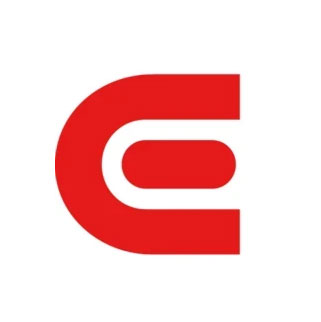Who?
Anyone meticulously managing environmental conditions of rooms or containers, such as temperature and humidity should prepare for summer temperature mapping.
A GxP validation engineer is required to qualify all temperature-related processes, systems, and hardware. Validation is a documented testing performed under highly controlled conditions, demonstrating that processes, methods, and systems consistently produce results meeting predetermined acceptance criteria. A mapping report is the assessment conclusion that the process, system, or hardware is in working order.
What?
Any room or container that shares an outside wall and houses temperature-sensitive products need summer temperature mapping as a part of temperature-related process validation. This is especially important for spaces with external walls rather than rooms or containers within a temperature-controlled building. Pallet storing positions, reserve storage, and transfer areas must be considered in mapping planning as well. Temperature mapping of your facility or container will indicate if the conditions are appropriate for storing your products.
*Other relevant environmental conditions can be measured/mapped by ELPRO if the hardware has a 4-20 mA output, e.g., humidity, evaporative temperature and radiative temperature.
When?
Depending on your product, geographic location, and varying environmental changes, mapping frequency can vary. Most facilities and containers require biannual mappings to account for the coldest and hottest temperature conditions. For most situations, temperature mapping should be performed during the peak of summer and winter.
Mappings have to be repeated when facilities or control systems are modified or temperature excursions are being detected during operation by the permanent monitoring system.
Hint: Prepare in advance to ensure resources are reserved and available for these times.
SCHEDULE ELPRO FOR TEMPERATURE MAPPING
SELF-SERVICE TEMPERATURE MAPPING KITS
Why?
Safety and Regulatory Compliance: You must prove that your room(s) or container(s) are equipped to ensure products are protected and safe during exposure to extreme ambient conditions. According to the ISPE guideline, it is important to perform the mapping in both summer and winter seasons. Summer mappings should define critical hot spots, and winter mappings should define the cold.
How?
/Qualification%20and%20Mapping/GxPMapping_WarehouseRoom_norm_shop.jpg?width=400&name=GxPMapping_WarehouseRoom_norm_shop.jpg)
Temperature mapping is a process where several temperature sensors are placed throughout the room or container to identify hot and cold spots as well as expected durations for excursions.
The type of devices used for mapping must have a suitable temperature range for the intended operating environment, (traceable 3-point calibration with accuracy equal to or better than +/-0.5°C and should be programmable to collect data with time intervals between 1 and 15 minutes. Devices must comply with applicable regulatory requirements. Are you interested in performing the mapping yourself?

Potential temperature influences like windows, doors, air-conditioning, or infrastructure have to be taken into account. An operational qualification (OQ) mapping assesses the worst-case scenario of an empty facility. The facility should be static (no personnel or activity), at rest (empty/no load), with all installations complete and with the temperature control units running. The temperature control units should be allowed sufficient time to fully condition the area and thermally equilibrate. The OQ mapping should be carried out prior to the PQ mapping.
The OQ report contains:
-
An overview of all temperature in the room
-
An evaluation of the performed stress test
-
A recommendation for installing the environmental monitoring system sensors. Experts are able to analyze the data results and recommend the quantity and placement of monitoring sensors appropriate for normal operation
The placement of these sensors will quickly detect any impeding temperature excursions before or when they occur. Managers are most likely going to want to make other accommodations to better control the areas at risk of temperature excursions.
After that mapping you will get the final positions of the environmental monitoring system sensors, and your warehouse/room is completely qualified.
Performance qualification (PQ) mapping is generally performed on a full load under dynamic conditions. The facility is actively moving product, and personnel are conducting normal daily operations. The purpose of a PQ mapping is to assess the worst-case scenario of a dynamic chamber. Informative measuring points (e.g., beside doors to detect any opening or outdoors to determine the influence of the outside temperature) must be noted in the mapping rationale.
Product Development and Testing: Regulations for Stability
The United States Pharmacopeia (USP) publishes public standards for pharmaceutical products manufactured or sold in the United States. USP <1150> addresses the requirements for stability testing. Stability testing identifies the effects of temperature, light, air, humidity, packaging components, and if applicable, microbial contamination, on product quality. Testing will determine the shelf-life of the product’s quality. Quality is described by the following criteria:
-
Chemical Integrity: Each active ingredient retains its labeled potency, within the specified limits. For example, temperature effects drug hydrolysis and drug oxidation, changing the way a chemical or electron bonds to a molecule.
-
Physical Integrity: The product retains appearance, palatability, uniformity, dissolution, and suspendability. For example, cold can cause excess viscosity.
-
Microbiological Integrity: The product is resistant to microbial growth and present antimicrobial agents retain effectiveness, both within the specified limits.
-
Therapeutic Integrity: The intended therapeutic effect remains unchanged.
-
Toxicological Stability: There is no significant increase in toxicity.
When possible, the dosage unit should be used as the unit of measurement in stability calculations. The mean kinetic temperature (MKT) should be formally calculated through the use of logarithmic functions to evaluate exposure to temperature extremes. The results of the calculation is a single number that represents the cumulative effect temperature exposure has on the product’s degradation.
Simply stated, it is imperative to have a stable and controlled temperature during stability testing.
The results of temperature mapping will give you the data needed to make adjustments to your room or container to reduce the risk of temperature excursion, whether that be increased insulation, a change of airflow and/or heating/cooling systems, etc.
Packaging and Logistics
When it is time to haul the product to its final destination, you must be able to prove that your product is safe throughout the distribution environment. Mapping a shipping container and/or box package on the destination route is going to help you plan and design a shipping route, a shipping container, and a package to accommodate your product’s stability budget. Temperature excursions having different durations and temperature extremes during different times of the year may force a handler to use refrigerated, freezer, or cryogenic containers instead of insulated packaging. The data acquired through temperature mapping will help you to compare logistical and packaging options.
Nah, I don’t need to map!
Okay, but let’s list the risks of not mapping. The space may not be monitored to accurately identify temperature excursions, which leads to the following:
-
Death or harm to patients
-
Criminal action, court fines
-
Bad reputation
-
Dissatisfied customers
-
Product returns
-
Increase of product waste
The bottom line is, get mapping! We can help!
SCHEDULE ELPRO FOR TEMPERATURE MAPPING
SELF-SERVICE TEMPERATURE MAPPING KITS
Conclusion
Finding a product’s exposure to temperature extremes and their duration assists in improving product degradation testing, thermal package design, and provides scientifically based determination as to when logistical and environmental controls should be used.




